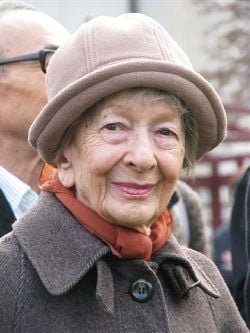Video Test
From New World Encyclopedia
Revision as of 18:42, 25 July 2023 by Svemir Brkic (talk | contribs) (Svemir Brkic moved page Info:Main Page2 to Info:Main Page Test without leaving a redirect)
New World Encyclopedia integrates facts with values. Written by certified experts.
Featured Article: Fermion
In particle physics, fermions are a group of elementary (or fundamental) particles that are the building blocks of matter. They are named after Enrico Fermi. In the Standard Model, elementary particles are classified as fermions and bosons. Fermions are usually related with matter, whereas bosons are related with fundamental forces (or radiation). Fermions are subdivided into quarks and leptons. Quarks are fermions that couple with a class of bosons known as gluons to form composite particles such as protons and neutrons. Leptons are those fermions that do not undergo coupling with gluons. Electrons are a well-known example of leptons. Everyday matter is composed of the first generation of fermions: two leptons, the electron and electron-neutrino; and two quarks, called Up and Down.
Popular Article: Wisława Szymborska
Maria Wisława Anna Szymborska (July 2, 1923 – February 1, 2012) was a Polish poet, essayist, translator, and recipient of the 1996 Nobel Prize in Literature. Born in Prowent (now part of Kórnik in west-central Poland), she resided in Kraków until the end of her life. In Poland, Szymborska's books have reached sales rivaling prominent prose authors, though she wrote in a poem, "Some Like Poetry" ("Niektórzy lubią poezję"), that "perhaps" two in a thousand people like poetry. She was already well-known in Poland, but became better known internationally after receiving the Nobel Prize.
Did you know?
Historians invented the phrase "Weimar Republic" for the government of Germany from 1919 to 1933 officially called Deutsches Reich, usually translated as "The German Reich" (source: Weimar Republic)

